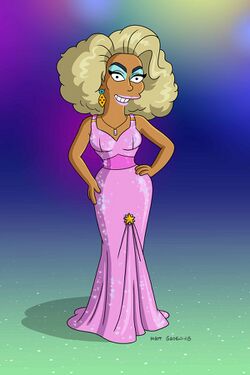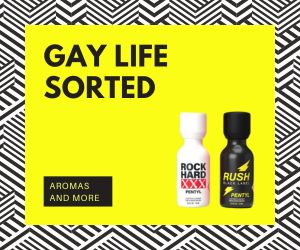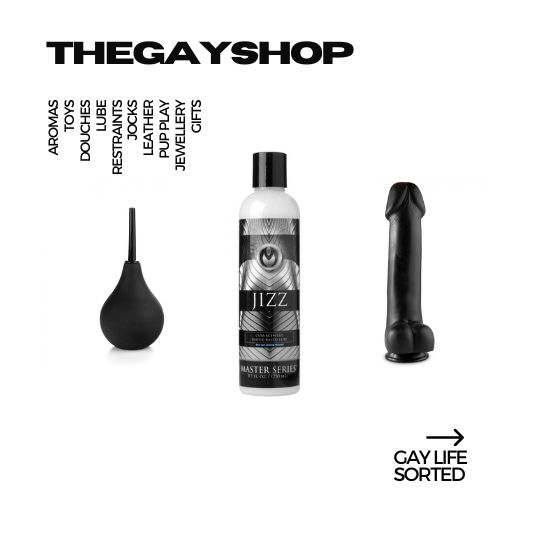Disney + hit the UK last month giving the gays unlimited viewing of princess films, High School Musical and Marvel hunks. However as Disney bought Fox last year and gained access to their back catalogue, For the first time every series of the Simpsons is available to stream online, every episode from the past 30 seasons.
Debuting in 1989 The Simpsons have become a television staple and global phenomenon. The series itself focuses on the family but part of its endearing charm and endurance has been its expansive cast of neighbours, relatives and townspeople. Over the course of the show’s history, there has been an inclusion of LGBT characters and storylines. With every episode available at the click of a remote I thought it was time to take a retrospective on some of the landmark episodes.
Homer’s Phobia
The first episode to tackle LGBTQ issues head-on was “Homer’s Phobia” Featuring “pink Flamingos” director and writer John Walters as John the owner of a local Kitsch shop that the family stumble upon. They become fast friends and John explains the concept of camp. The next day Homer remarks to Marge and Lisa that they should invite John and his wife over. Once it’s explained to him that John prefers the “company of men” homer remarks “who doesn’t”, Homer then gets the gay panic which is played for laughs with Marge being the voice of reason. He comments that he is a simple man who likes “beer cold, tv loud and homosexuals flaming”. There is also a discussion on the reclamation of the word queer.
As the episode progresses Bart begins to copy John’s mannerisms leading to his fear that his son might be gay. This leads to homer taking Bart on a conversion therapy road trip including looking at soft porn cigarette ads and a trip to -ironically- an all gay steel mill. After enlisting Barney and Moe on a hunting trip the quartet ends up cornered by some frenzied Reindeer. John Saves the day with a robotic Santa and earns Homer’s respect.
This episode debuted in 1997 and I was worried it might not have aged well given the attitudes and representations of the time. However, and I suspect due to Walters involvement, it feels as fresh and relevant today as it did back then. John is never the subject of the joke and Homer’s fear and ignorance is largely framed and ridiculed.
Three Gays and a Condo
The next episode came in 2003 “Three Gays and a Condo” sees Homer move out of the family home after feeling Marge only married him because she was pregnant and trapped. Homer moves into a condo with Grady and Julio. Homer embraces the trappings of a gay lifestyle, Brunch, designer clothes, skincare and dancing shirtless in a gay bar. He is trying to reconcile with Marge but still carries doubts. Grady kisses him and Homer’s heterosexuality is confirmed as he runs back to Marge and tells Grady “I’d only break your heart”.
This episode introduces Julio played by Simpsons MVP Hank Azaria who is basically an animated version of the character he played in The Birdcage opposite Robin Williams. This episode feels a lot more pun and cliche based than the previous episodes’ social commentary. We are introduced to “West Springfield” the gay district. The shops include Fab Abs, Armistead mopeds, Stonewall bakery and Victor/Victorias.
It also has a cameo by Weird Al Yankovich.
There’s something about Marrying
Attitudes had begun to change by 2005 and same-sex marriage was no longer considered abnormal and laws were being changed. The Simpsons presented “There’s something about Marrying” where Springfield passes a law allowing same-sex marriage as a cynical tourism move to grab the pink pound. The only issue is that the church won’t allow it. Ever the opportunist Homer gets ordained as a minister online and sets up a registry office in the garage.
It’s popular and queues form. Homer’s best line is “who’s next Adam and Steve or madam and Eve”.
The drama comes one step closer to home as Marge’s sister Patty wants to be married to another woman. This comes as a shock to Marge, who through the use of a montage is shown to be in deep denial over her overt lesbianism. Marge discovers that Patty’s bride is actually a man posing as a lady golfer to get a competitive edge, all secrets are exposed at the wedding and Patty and Selma walk off into the sunset as chain-smoking spinsters.
It’s nice to see cracks in the usually tolerant Marge, who struggles when it’s a member of her own family. It’s also nice to see the show establish an existing character as being something other than heterosexual. Homer being a minister marrying gay couples is a nice growth, yes it’s motivated by greed but it’s still nice to see. However when he offers to marry anyone to anything, it’s a little bit of a back step when framed against same-sex marriage, but that’s 2005 I guess!
Flaming Moe
Smithers gets his first feature in 2011’s “Flaming Moe” having long been Mr Burns’ closeted right-hand man, he had always had a nod and a wink in the previous episodes. He takes centre stage her after learning Mr Burns did not respect him and has not included him in his will. Feeling dejected he attempts to enter the local gay club but is not allowed in as he is too average looking. He finds himself at Moe’s tavern and learns that Moe is broke. The two go into business turning Moes into a gay bar for the average man. The men assume Moe is gay and get him to stand for public office. Smithers is against it as he knows Moe is straight. The plot comes to a conclusion when Moe is unable to kiss Smithers in public and comes out as straight much to the crowd’s dismissal. Once they have dispersed, Moe kisses him and remarks “like frisbee golf, glad I tried it, won’t go back again”.
This is an odd episode, it fits into the “Moe’s tavern gets a makeover” and lampoons previous episodes of this type. Smithers’ plotline never seems to go anywhere, the focus shifts to Moe halfway through and there’s a weird subplot involving Skinner falling in love with a substitute music teacher with guest voices of Kristen Wiig and Alyson Hannigan. It feels like there are three episodes in one and none really gets the time to develop. There’s literally one scene of the Moe’s regulars dealing with the culture shock of their regular bar becoming an LGBT space. It feels like an earlier season would have got more humour out of that rather than just having it immediately accepted.
Burns Cage
By 2016 it was finally time for the Burns/Smithers’ relationship to take centre stage. “Burns Cage” sees Smithers’ realise he will never get the attention he craves from Burns and question his future. His co-workers decide to help. Lenny declares “we need to find him the right woman…who can find him the right man”.
They go onto Grindr (finding George Takei and Gay Homer). Smithers ends up with Julio and falling in love, and walking out of the plant. But ultimately after living his own life, Smithers ends up returning to Burns and the pair reach a new understanding, with Burns grading Smithers work as “excellent”.
Smithers gets some long-overdue focus and resolution to one of the series longest subplots. It’s great that they have managed to move away from stereotypes and stunts and back into character-focused comedy. However, the unnecessary subplot with Milhouse playing a lead role in the school production of Casablanca rumbles along. However, it intersects with the main plot when Smithers and Milhouse have conversations around unrequited love. It gives the characters a nice parallel.
Werking Mom

The most recent episode from the latest season is “Werking Mom” which involves Marge becoming a Tupperware saleswoman and getting successful after a drag makeover gives her confidence. The gay community assumes she is a drag queen and embraces her. It’s a Marge story about embracing her “inner warrior woman”. Homer accidentally outs her and apologies by getting his own drag makeover and understanding her journey.
Honestly, this feels like a story based around having a RuPaul cameo, It’s a wafer-thin plot that feels very much tied into the current pop culture explosion of drag. If anything it highlights how far the show has come in its portrayal of LGBT culture. Being in drag and a gay bar are just plot points when it comes to telling Marge’s story. It’s interesting that they choose to put a female character in drag to embrace their inner diva.
I’m sure in years to come there will be more episodes and changes to both acceptance and portrayal. We have seen Gay, Bisexual and Lesbian characters represented in Springfield, the next logical step would be to see a trans character. Ideally, an established character transitioning would be great to see, however, I’m not sure how well this could be handled within a 22-minute episode, especially if they contain an unrelated subplot as seems to be the show’s structure.
Opinions expressed in this article may not reflect those of THEGAYUK, its management or editorial teams. If you'd like to comment or write a comment, opinion or blog piece, please click here.



